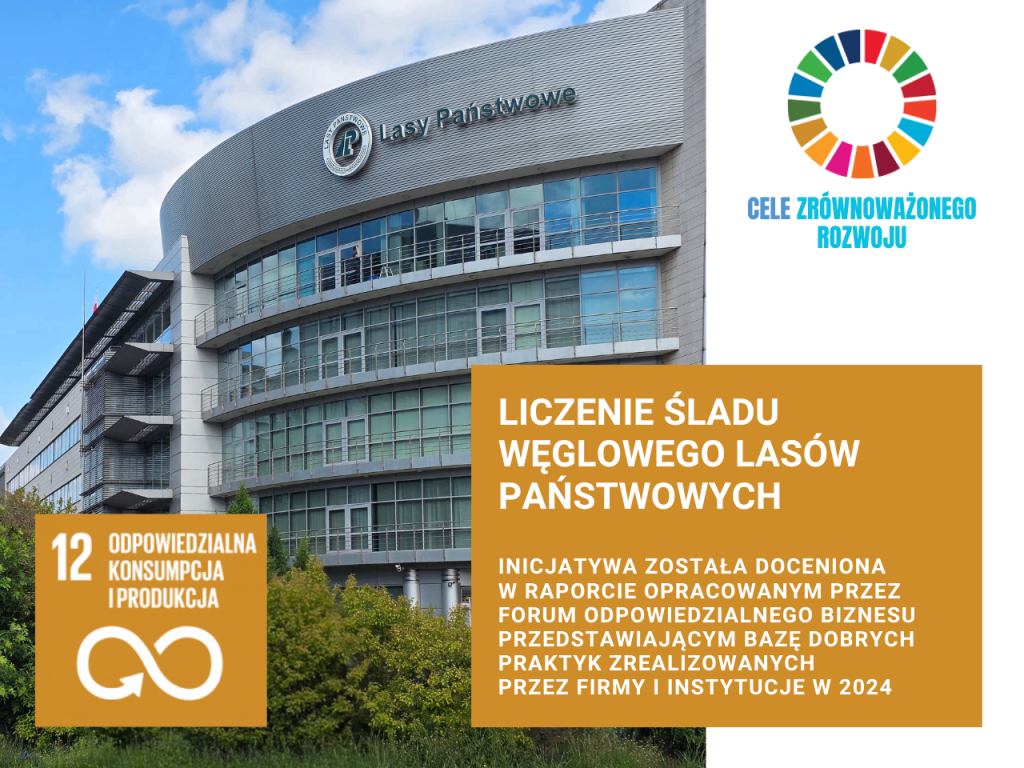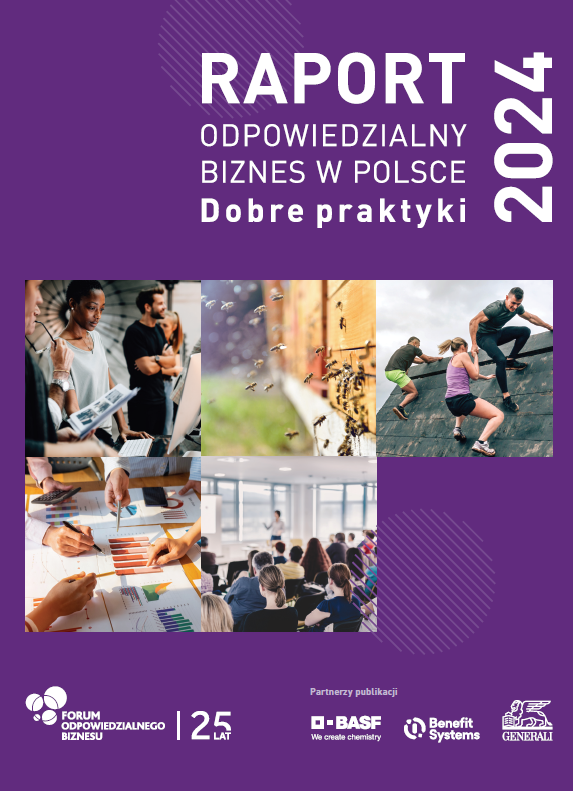The climate-focused efforts of the State Forests have been recognized by the Responsible Business Forum. The prestigious report “Responsible Business in Poland. Best Practices” highlighted, among other initiatives, the organization’s carbon footprint inventory conducted under the “Carbon Forests” project.
“Responsible Business in Poland. Best Practices” is an annual publication that compiles concrete and exemplary actions by companies and institutions in support of the environment, people, and responsible management. The report illustrates how the principles of sustainable development are put into practice.
UN Sustainable Development Goal 12 relates to sustainable consumption and production—using resources in a way that doesn’t place undue stress on the environment. Calculating a carbon footprint fits perfectly into this framework, as reducing emissions requires first understanding their sources. It is a fundamental step toward smarter energy use and more informed decision-making—both in daily operations and long-term planning.

What Is an Organization’s Carbon Footprint?
It is a detailed measurement of greenhouse gas emissions resulting from an institution’s operations. In 2023, the State Forests analyzed emissions across two scopes:
Scope 1 – Direct emissions, e.g., from fuel combustion in vehicles and buildings, or from air conditioning systems;
Scope 2 – Indirect emissions resulting from the consumption of purchased electricity and heating.
The State Forests’ carbon footprint for 2023 amounted to:
65,440.2 tons of CO₂e (market-based approach) – calculated using emission factors specific to the electricity provider;
60,615.7 tons of CO₂e (location-based approach) – based on national average emission factors published by KOBiZE, representing actual emissions in Poland.
“Knowing the sources of emissions is essential if we want to reduce them effectively,” says Witold Koss, Director General of the State Forests. “While we are not legally required to report emissions, it is our duty to implement best practices—not only out of responsibility for managing natural resources, but also to foster reliable cooperation with our partners.”

Importance for the Timber Supply Chain
This initiative is significant not only internally, but also for commercial partners who purchase timber. An increasing number—especially large processing plants—are already required to disclose the carbon footprint of their products. Without reliable emissions data related to raw material acquisition, they would not be able to meet these obligations. In this context, carbon footprint data becomes as important as FSC or PEFC certification.
Where Do Emisions Originate?
In Scope 1, the largest source of emissions is transport fuels.
In Scope 2, it is electricity consumption.
Overall, 71% of emissions come from real estate, 28% from vehicles, and 1% from tools and specialized machinery. Although the latter currently contribute minimally, they will continue to be monitored.
Based on the collected data, priority actions were identified:
improving energy efficiency in buildings,
transitioning to a low-emission vehicle fleet.
These efforts are already underway through projects such as “Forest of Energy” and “Improving Energy Efficiency of Buildings in the State Forests National Forest Holding”.
Specific best practices include:
energy audits of facilities,
modernizing building systems and mechanisms to reduce emissions and energy consumption,
generating energy from in-house renewable installations,
purchasing green energy from external suppliers,
using electric vehicles,
automating environmental data collection,
educating staff on energy savings and emission reduction.
Next Step: Carbon Footprint of Timber
The State Forests are now expanding their efforts to calculate the product carbon footprint, specifically for timber. The analysis follows a “cradle-to-gate” approach—tracking emissions from raw material production, through treatment, to the point at which it is delivered to the customer. This includes all stages: seedling production, silvicultural treatments, harvesting, extraction, and transport to the client. Initial results are expected by the end of summer.
Recognition as a Model for Public Institutions
The recognition by the Responsible Business Forum confirms that the State Forests not only acknowledge global climate challenges, but also consistently implement concrete actions—serving as a model for other public institutions.
